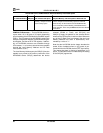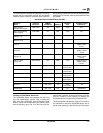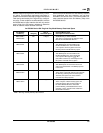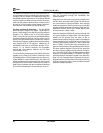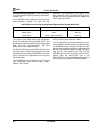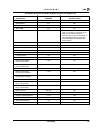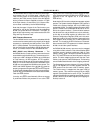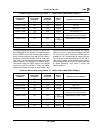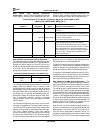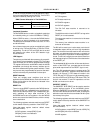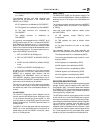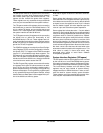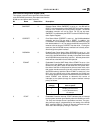
AMD
P R E L I M I N A R Y
70
Am79C930
The Am79C930 device maps the Resource Data regis-
ter accesses into 1K–16 of the upper 1 Kbytes of the
Flash memory space so that Resource Data may be
read from the Flash memory. Byte 0 of the Am79C930
device’s Resource Data is mapped to location 1 FC00h
of the Flash memory. A maximum of 1K–16 bytes of Re-
source Data is allowed by the Am79C930 design.
Note that the upper 16 bytes of the Flash memory are
reserved for use by the firmware and the embedded
80188 core for 80188 core initialization. The upper 16
bytes of the Flash memory may not be used to store ISA
Plug and Play Resource Data.
MAC Firmware Resources
The Am79C930 device contains an embedded 80188
core that can be used to perform the majority of the tasks
necessary to implement the MAC portion of the IEEE
802.11 (draft) standard. The following section describes
the resources that are available to the 80188 core and,
hence, to firmware written for the embedded 80188.
MAC (80188 core) Memory Resources
— The
Am79C930 device contains several resources that are
accessible through the 80188 core. These resources in-
clude: up to 128K–128 bytes of SRAM, up to 128 Kbytes
of Flash memory, 16 MIR registers, 32 TIR registers,
and 16 bytes of peripheral device space attached to the
XCE pin. All of the resources that are available to the
80188 core are mapped into 80188 memory space. The
LMCS and UMCS registers of the 80188 core must be
properly programmed to generate UCS and LCS signals
in order to take full advantage of all of the resources pro-
vided by the Am79C930 device and associated SRAM,
Flash and XCE devices.
(In reality, only UCS is used internally. When an access
is performed without the presence of an active UCS
signal, then LCS is assumed, and the access is exter-
nally directed toward the SRAM with the SCE signal, or
internally to the TAI register set, or to the external
XCE device).
Note that the BIU contains at least two separate register
spaces. The System Interface Registers (SIR) (space is
visible to the system interface, but is not visible to the
embedded 80188. The MAC Interface Registers (MIR)
space is visible to the embedded 80188, but is not vis-
ible to the system interface. Communication between
the device driver and the 80188 core occurs indirectly,
as the bits of the MIR0 register will affect bits in the
General Configuration Register (SIR0) and vice versa.
Note that a total of 16 bytes of space is reserved for the
MIR registers, while currently only 10 MIR registers are
defined. The remaining 6 MIR locations are reserved.
Also note that all 32 TIR registers are visible to both the
80188 core and the system interface.
Am79C930 80188 memory resources may be mapped
using either of two schemes. One scheme makes 256K
separate memory locations usable as 128K of Flash
memory space, 128K–128 bytes of SRAM, 64 bytes of
BIU, TAI, and XCE resources and 64 bytes of reserved
space. The other mapping scheme will alias the Flash
memory into a portion of the SRAM space. The following
text and tables describe each of the mapping schemes.
The first mapping scheme (scheme “A”) places SRAM,
the 32 TIR registers, the 16 MIR registers, and the 16
XCE locations into the lower 128K of memory space.
The Flash memory is mapped into the upper 128K of
memory space. This scheme requires that the LMCS
register of the 80188 core be set to 1FF8h. The UMCS
register of the 80188 core must be set to E038h. Also re-
quired is that bit 6 of the MIR0 register (the mapping se-
lect bit) is set to 0.



